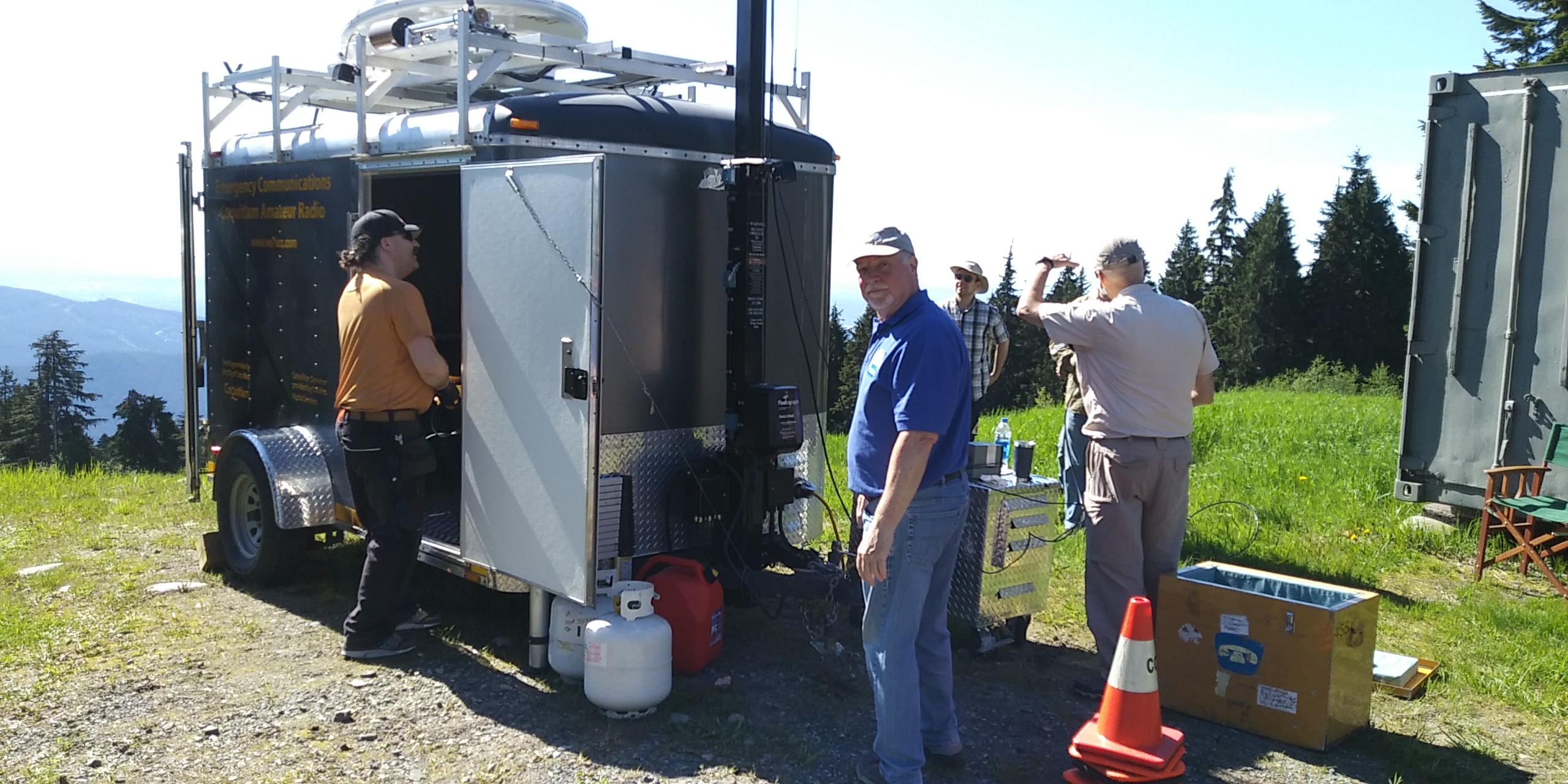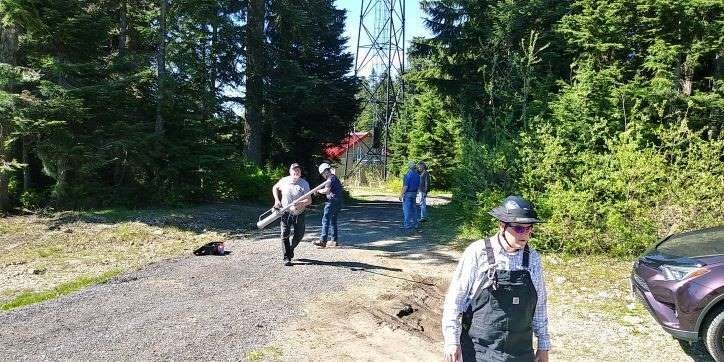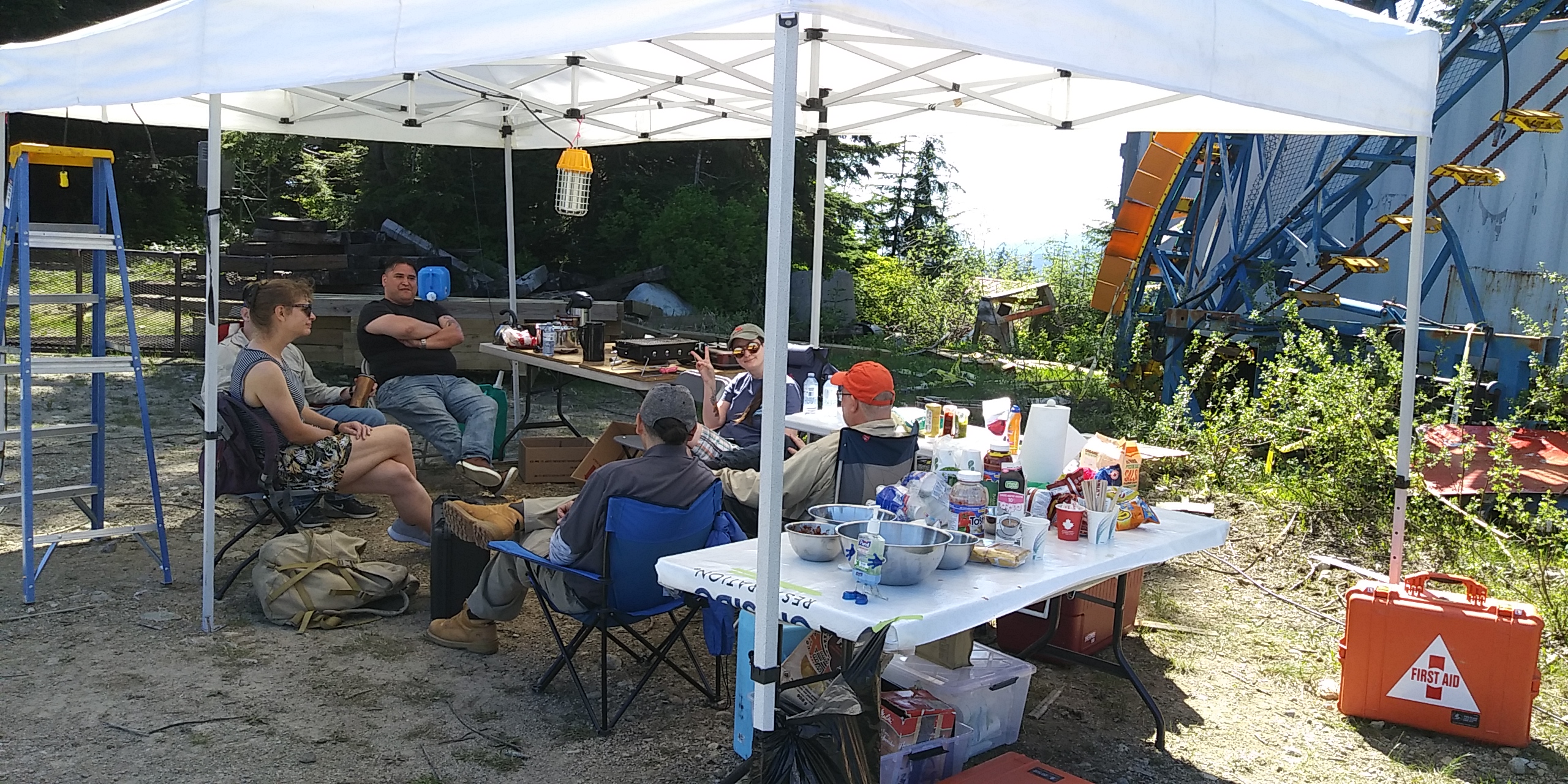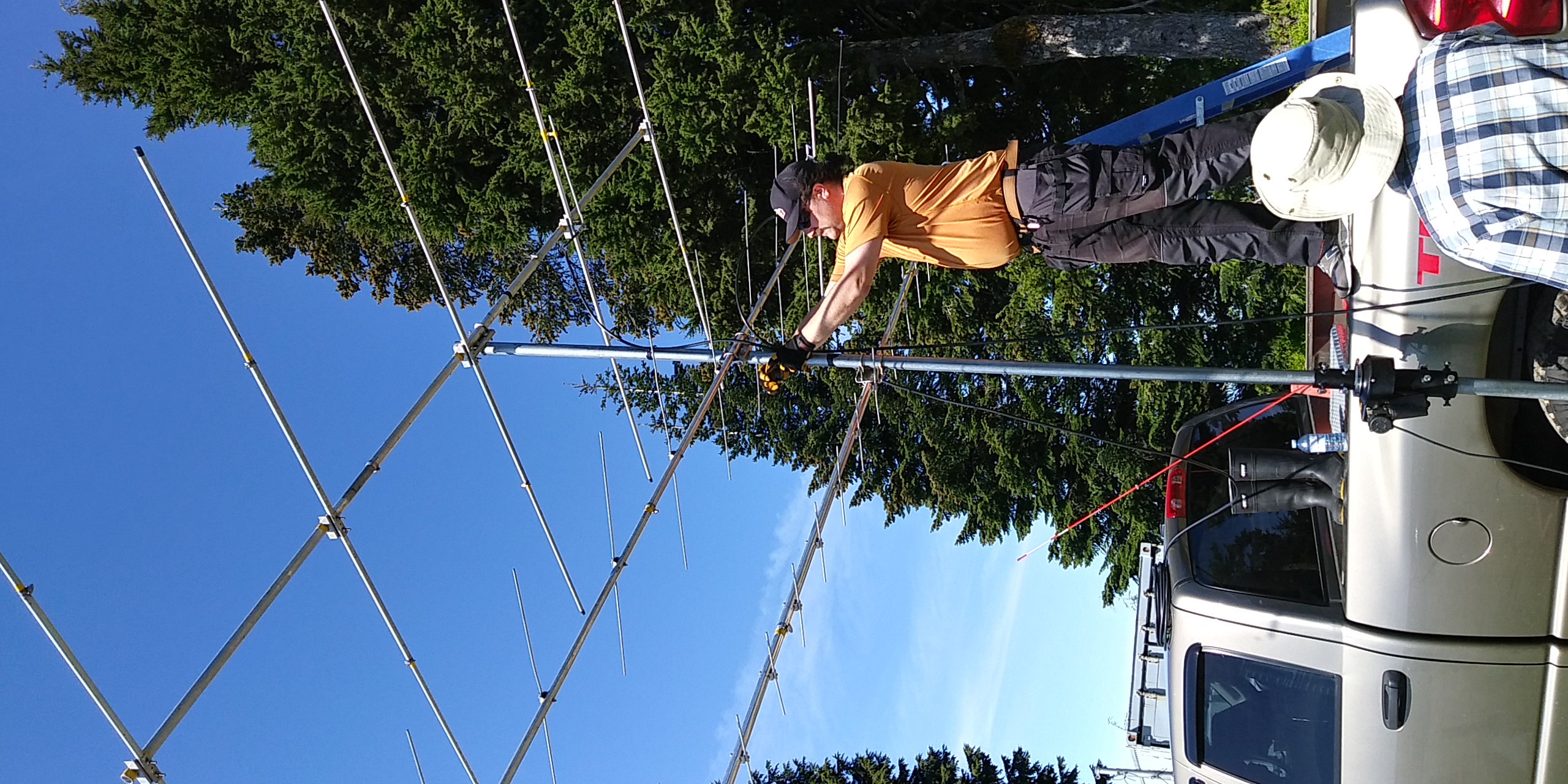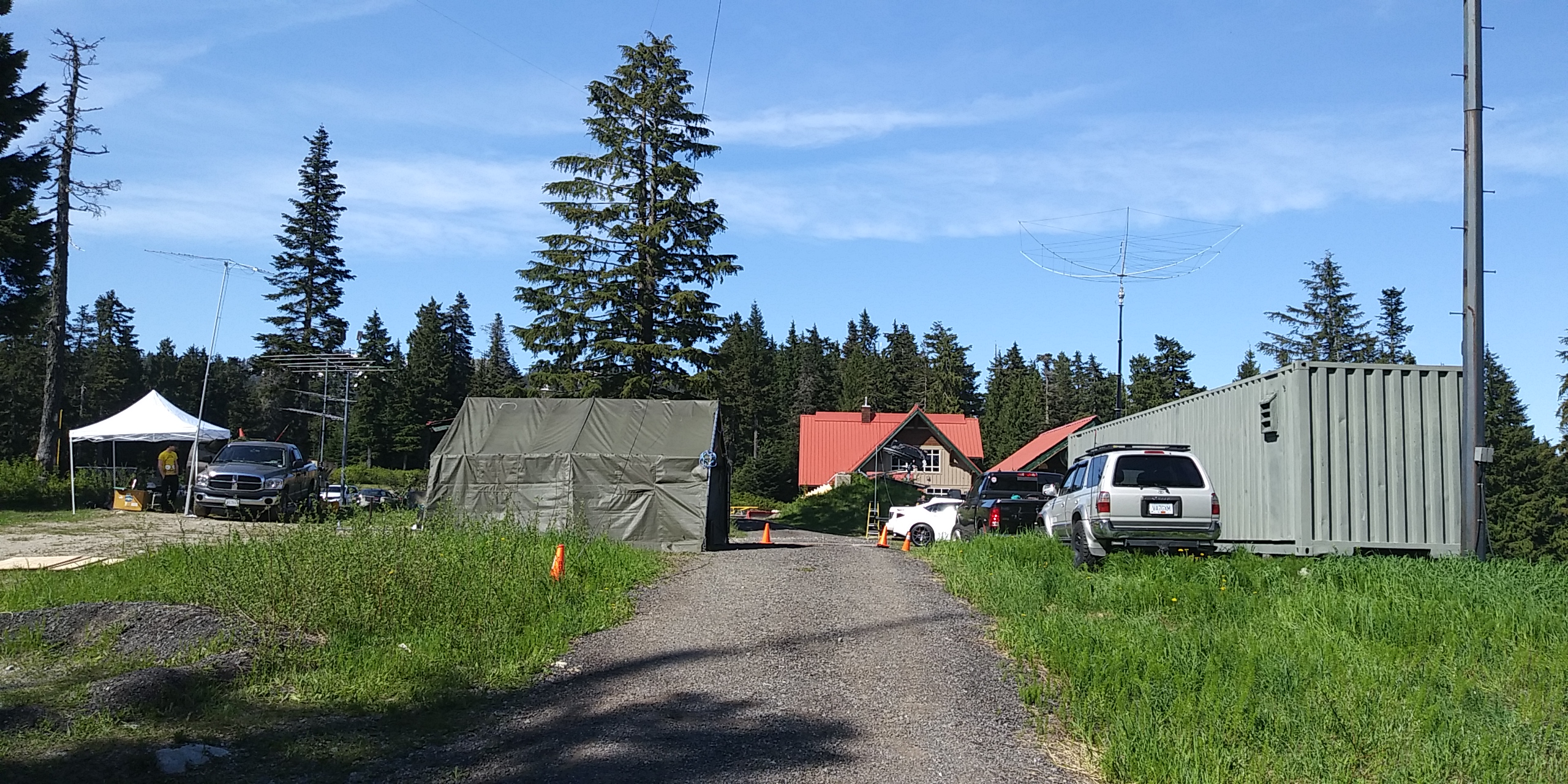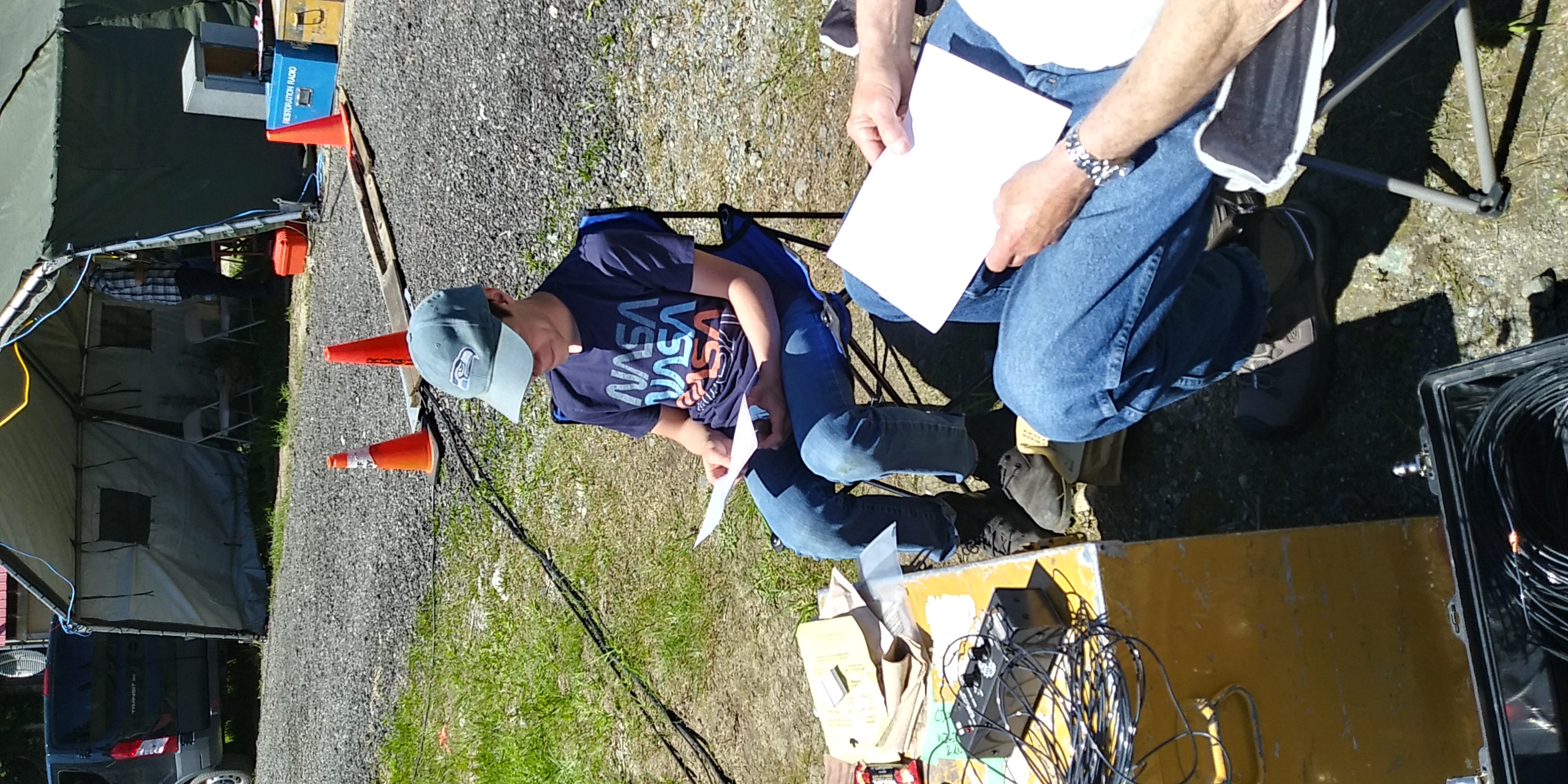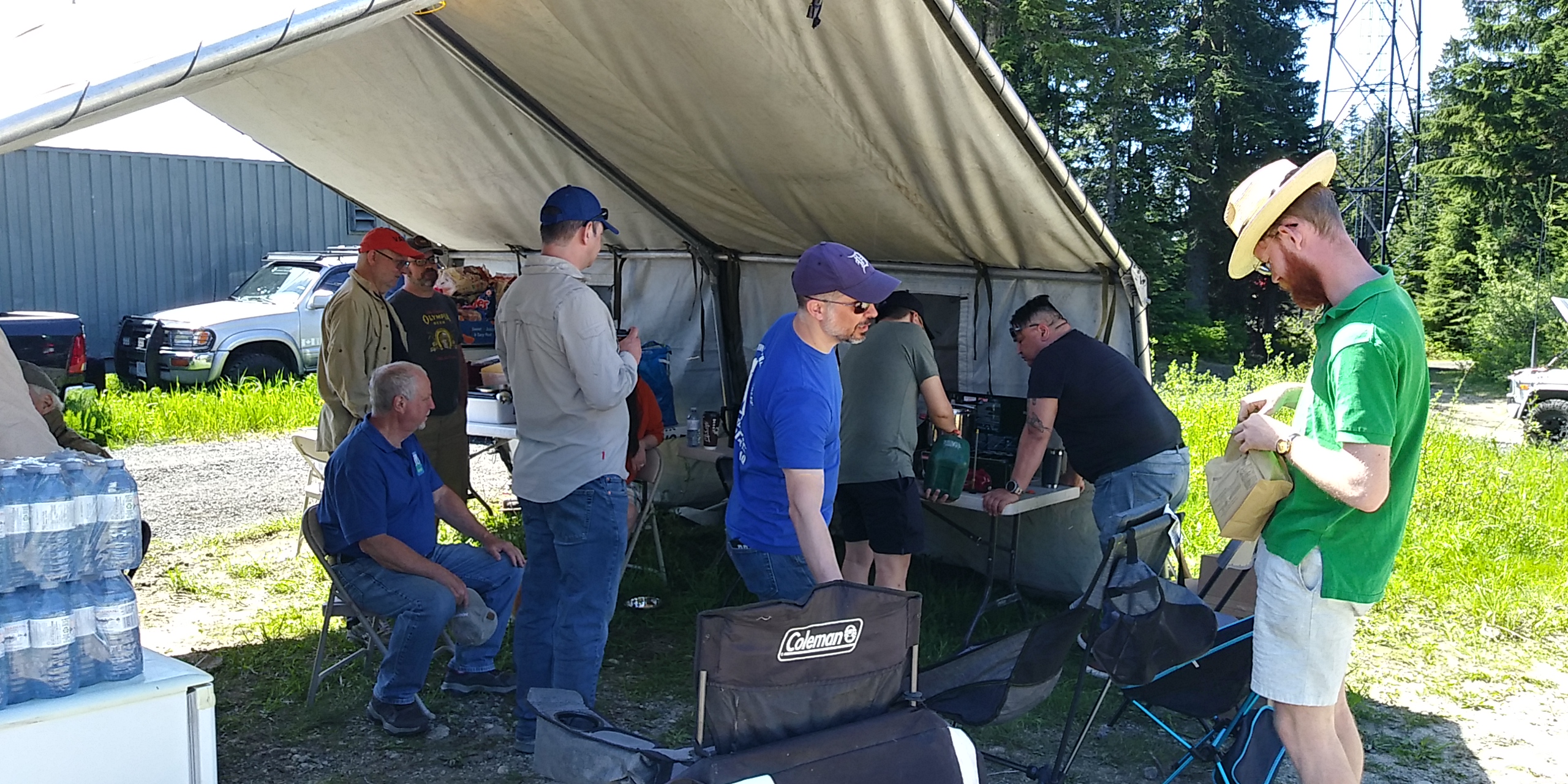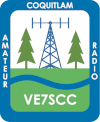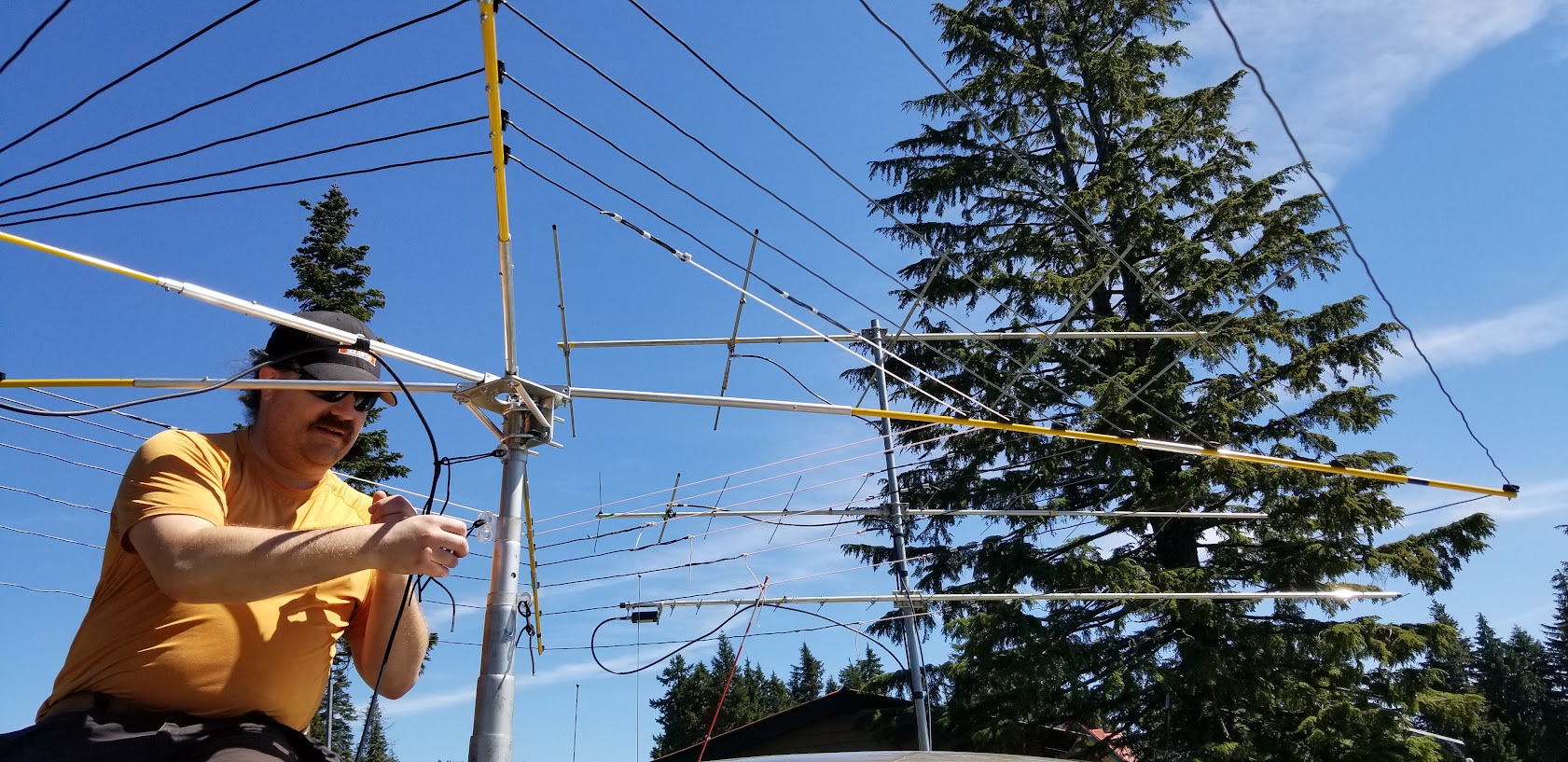Story by: Steve VE7TTQ
The CARESS team turned out with enthusiasm for Field Day 2022, with a strong effort to prove the adage that the satisfaction received is matched by the effort that one puts in.
The chosen venue was a site about 12 km up the Mount Seymour Parkway, with a superb view to the southeast towards Mount Baker in Western Washington, over the toboggan run and across the Fraser Valley.
The team was joined by members of the Canadian Forces and by members of the New Westminster ARC, to put together 1,532 contacts and a claimed score of 4,750 at Mount Seymour before additional bonus points, operating in the 3A category.
The HF antennas included a multi-band spider beam upon the emergency trailer telescopic mast, an H-shaped loop for the 20-metre band, and dipoles for 40 and 80 metres. Antennas for VHF and UHF included yagi antennas on 6 metres, 2 metres, and 70 centimetres.
Not distracted by the glorious weather on Saturday, the operators began brightly on 20 metres, professionally reaping the CW contacts, but struggling with the atmospheric absorption of 15-metres signals. Conversely, a strong daytime LSB run on 40 metres (“Al, you are just killin’ it”) continued even when the G1 atmospheric storm arrived at about 0 UTC on Sunday, producing static crashes on the 20 metre band and slowing the contact rate.
However, spirits were high, with an education session on building dipoles and with a corgi dog also on hand as mascot. Visiting representatives from emergency agencies arrived and were signed in, and by 9 p.m. there were about 750 contacts in the book, and the team was well fed by ladle-fulls of chili and lashings of coffee at the other operations centre, the cook tent.
Night-time propagation conditions were less robust than hoped for, but the team powered through the swarms of wee insects in the operating tent to emerge with 166 contacts on 80 metres and 229 CW contacts on 40 metres, for a total of about 1,750 contacts by 14:00 on Sunday, heading into a professionally-worked homestretch until the final bell at 18:00 hours.
The takeaway lessons are instructive, and foremost will be those that can boost the efficiency and the safety of a well-run event, that can only run smoothly after days of preparation, such as assembling boxes of equipment and checking out generator sets. For example, plans are in the works for a rack-style coax cable patch panel, to eliminate nighttime coax cable realignment challenges in dark conditions; sound outputs to a web server, so that one can listen on bluetooth to activity at any station; and a real-time contact logging map.
Best moments: The air cannon in action to elevate the dipole ends into the trees; contemplating (not really) tying off an antenna lead to a smart car; a raccoon coming down from its tall tree in the night to steal timbits; the emergency trailer getting a comprehensive workout, including the passing of radiogram message traffic; success, including FT-8 contacts, with the VHF/UHF antennas; achieving an AM mode contact on 40 metres; and the overall high spirits and the satisfaction of seeing the solid results from the logistical planning and execution.
